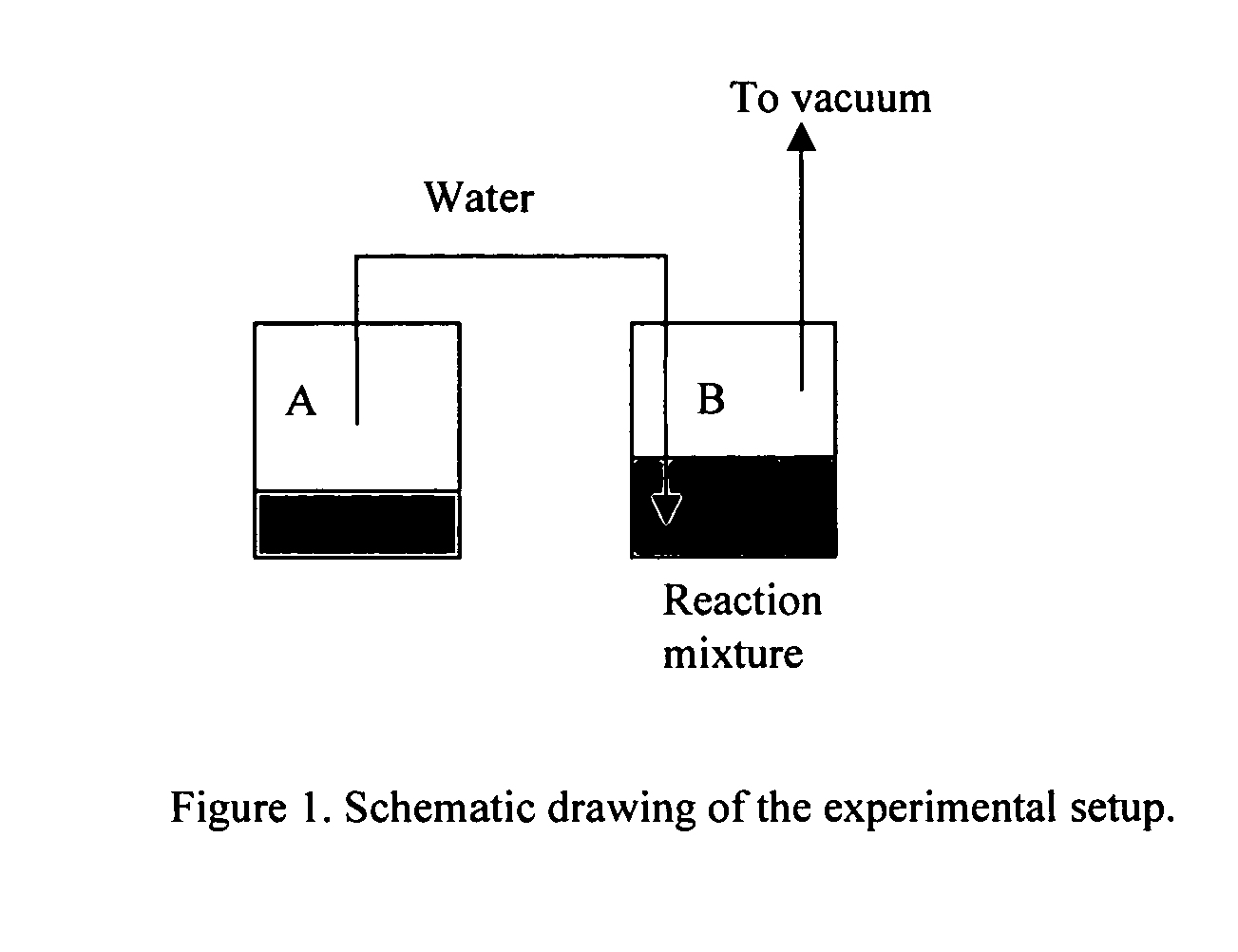Concentration of fatty acid alkyl esters by enzymatic reactions with glycerol
a technology enzymatic reactions, which is applied in the field of enzymatic processes for the concentration of fatty acid alkyl esters, can solve the problems of high processing cost of concentrated fatty acids, low yield of final products, and high time consumption of methods, so as to achieve the effect of safe consumption for an animal
- Summary
- Abstract
- Description
- Claims
- Application Information
AI Technical Summary
Benefits of technology
Problems solved by technology
Method used
Image
Examples
example 1
[0034] 100 g ethyl esters (10% EPA and 50% DHA (realative peak area)), 13 g glycerol and 13 g immobilized rhizomucor miehei lipase (RM-IM) from Novozymes (Bagsvaerd, Denmark) were mixed in a reaction vessel and stirred. The reaction was performed at 40° C. (pressure of 0.1-1 mbar) with water / vapor entering from a second separate vessel (se FIG. 1 above for schematics). Samples were collected from the reaction mixture after 8, 16 and 24 hours and analyzed by GC-FID. The results showed that the DHA content in the ethyl ester fraction was 61%, 70% and 74% after 8, 16 and 24 hours, respectively. After 24 hours the amount of ethyl esters was reduced to approximately 40% and the level of free fatty acids had increased to approximately 2%. The amount water consumed from the second vessel was about 40% relative to the initial amount of ethyl ester. Next, the enzymes were removed by filtration and the mixture was degassed and distilled using short path distillation in order to separate the e...
example 2
[0035] The experiment was performed under identical conditions as in example 1, except that 4.3 g glycerol, 4.3 g RM-IM and 33 g of ethyl ester (10% EPA and 50% DHA) were reacted at a temperature of 25° C. After 29 hours, 37 hours and 41 hours the ethyl ester fraction contained 81% DHA, 84% DHA and 80% DHA, respectively. The level of AA was reduced from 0.7% at 0 hours to 0.26% after 41 hours. The reaction consumed 9 g of water. The acid value was in the range of 5 to 8.
example 3
[0036] The experiment was performed under identical conditions as in example 1, except that a 100 g fatty acid ethyl esters (ethylated borage oil rich in GLA), 13 g glycerol, 0.34 g lecithin and 13.7 g immobilized Thermomyces Lanoginusus (TL-IM) from Novozymes (Bagsvaerd, Denmark) were reacted at a temperature of 50° C. At start, the concentration of GLA ethyl ester was 20% and the ratio between 18:1, 18:2 and 18:3 peaks was 1:2:1. After 2 hours the concentration of GLA was increased to 34.8% and the 18:1, 18:2 and 18:3 ratio was changed to 1:3:3. After 5 hours the concentration of GLA was increased to 42.4% and the ratio of 18:1, 18:2 and 18:3 was 1:3:4. After 23 hours the concentration of GLA was increased to 67% and the ratio of 18:1, 18:2 and 18:3 was 1:3:11. The amount water consumed during the reaction was 547 g.
PUM
| Property | Measurement | Unit |
|---|---|---|
| reaction temperature | aaaaa | aaaaa |
| pressure | aaaaa | aaaaa |
| temperature | aaaaa | aaaaa |
Abstract
Description
Claims
Application Information
 Login to View More
Login to View More - R&D
- Intellectual Property
- Life Sciences
- Materials
- Tech Scout
- Unparalleled Data Quality
- Higher Quality Content
- 60% Fewer Hallucinations
Browse by: Latest US Patents, China's latest patents, Technical Efficacy Thesaurus, Application Domain, Technology Topic, Popular Technical Reports.
© 2025 PatSnap. All rights reserved.Legal|Privacy policy|Modern Slavery Act Transparency Statement|Sitemap|About US| Contact US: help@patsnap.com

